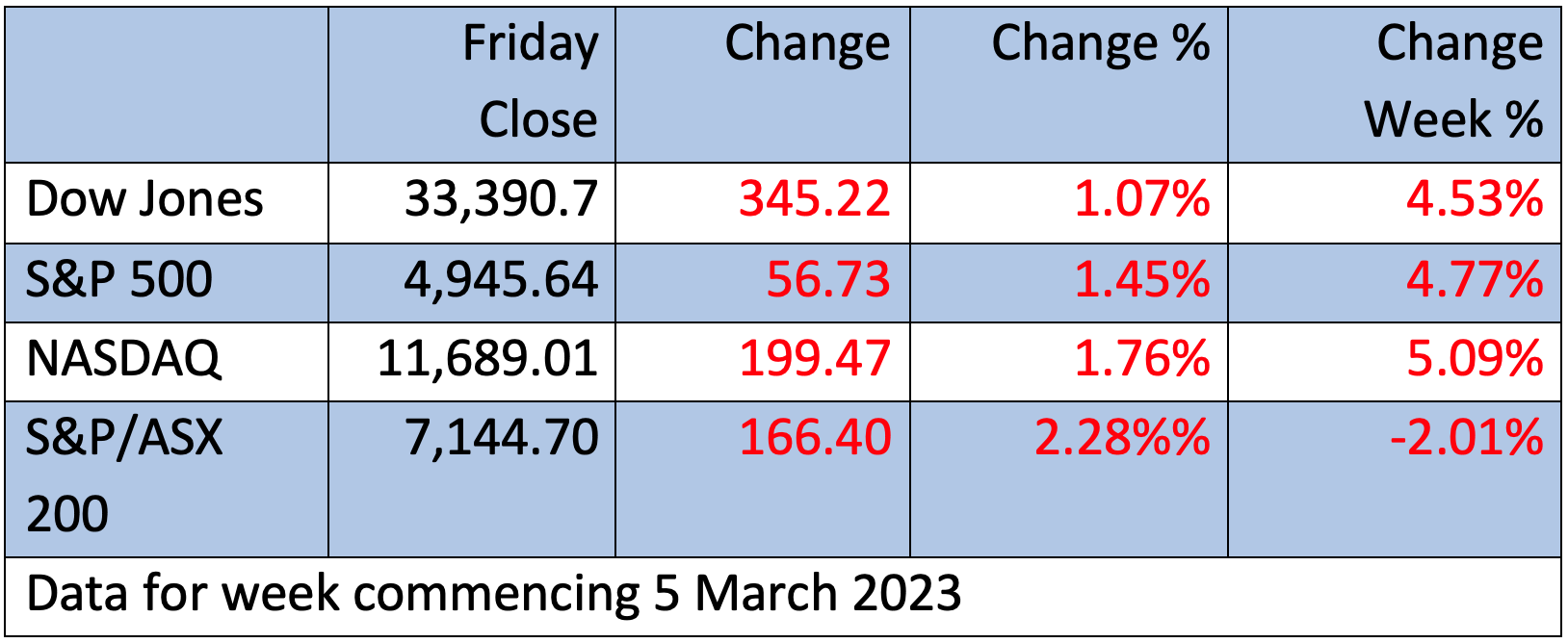
Trading on Wall Street overnight reminded us that the Star-Spangled Banner national anthem of the United States boasts or warns that we’re talking about “the land of the free and the home of the brave.” And when it comes to banking, if someone puts their money in a ‘too small to be saved’ bank, they’re being brave in a ‘too free’ financial system!
Yep, the good old US of A had another small bank failure, when the Californian banking regulator closed the doors of Silicon Valley Bank (SVB). This led to the typical reaction on the stock market, with regional banks copping sell-offs, which is the usual ‘sell first and ask questions later’ reaction.
Ironically, this negative market trend outweighed the positivity that came out of the Jobs Report, which might have helped stocks sneak higher if it wasn’t for this banking problem, which is clearly linked to the Fed’s hard interest rate policy that has KO’d many tech companies in Silicon Valley. “Banking system fears are rattling investors right now,” said Ed Moya, an analyst at Oanda. “It’s becoming pretty clear that the Fed’s rate hiking campaign has definitely taken policy to some very restrictive levels, and now some banks are going to really struggle here.”
These banking concerns are bound to spook investors for a week or two and put enormous focus on what the Consumer Price Index says next Tuesday, US time.
Right now, US goods inflation is tumbling but services/wages inflation is falling more slowly. That’s why the market liked the February employment stats, which said that though jobs increased by 311,000, it was mainly in leisure and hospitality, while other sectors had small or negative growth. Economists expected an increase of 225,000, so job creation was bigger than expected.
However, the big plus for inflation was the smaller-than-expected average hourly wage growth of 0.2%, along with a jump in the unemployment rate from 3.4% to 3.6%. The Fed must have liked these developments.
“We have by every definition the tightest labour market in years and yet it was the 23rd consecutive month in which wages did not keep pace with inflation,” David Kelly, chief global strategist at JPMorgan, said to the Financial Times. “When push comes to shove, workers don’t have the bargaining power people think they have.”
The Fed should like that but we now have to hope the CPI shows it next week if you want a positive bounce for stocks. That said, this bank cloud is bound to knock US consumer confidence for a six and rattle those businesses and service providers raising prices and adding to inflation.
To the worrying story of the Silicon Valley Bank (which was looking for a capital raising yesterday before the regulator blew the whistle on the business), infected out market on Friday. Not surprisingly, our banks copped it, though they’re not exposed to SVB.
CBA lost 3.25% to $95.51, NAB dropped 2.98% to $29, Westpac was off 2.64% to $21.79, while ANZ slipped 2.61% to $23.85.
The S&P/ASX 200 gave up 166.4 points (or 2.28%) on Friday and it was heading in the right direction, until the banking concerns took the Index down. The index finished down only 2% for the week.
Predictably, our regional banks had bigger losses, with Bendigo Bank down 3% to $9.15 but Suncorp only lost 2.77% to $12.62.
Here are the big winners and losers of the week, thanks to Bloomberg and the AFR:
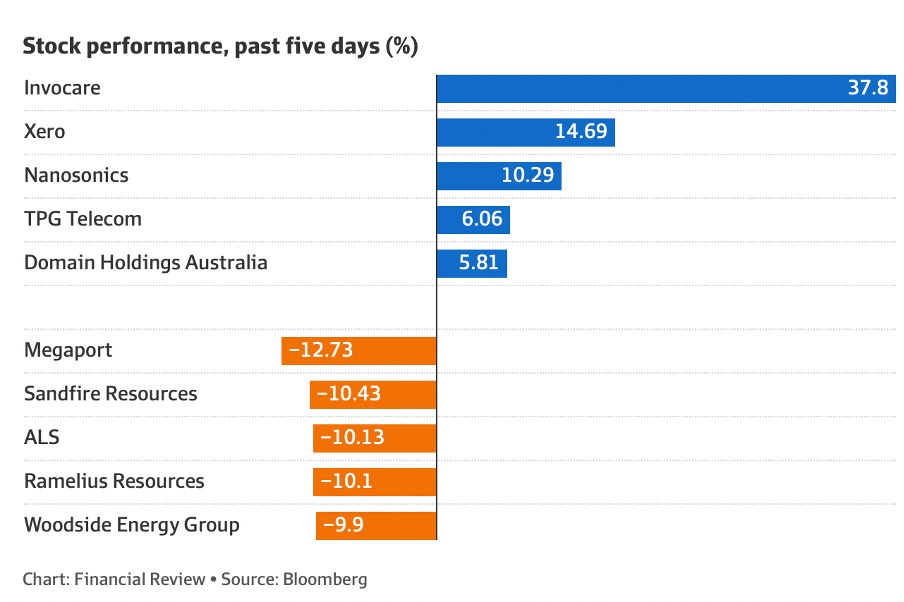
It was a rough week for commodity prices, with iron ore, lithium and oil prices softer. This has to be connected to greater recession concerns for the US, which then doesn’t bode well for the global economy, given Europe’s challenges linked to the war in Ukraine.
What we’re seeing is another buying opportunity but I wouldn’t be in a hurry to buy just yet. I want to see next week’s CPI and keep watching the Fed’s reaction.
The turning point for stocks will be when the market believes interest rate rises are close to the top. Only convincing economic data that says inflation is falling will trigger that.
Bank failure could be a development that the Fed won’t easily ignore, when its rates committee get together across March 21-22, in two weeks’ time.
What I liked
- The RBA is sounding less hawkish on rate rises as economic data softens. It has seen slowing growth, some easing in the jobs market, signs of a peak in inflation and reduced risk of a wages breakout, which are good signs for fewer rate rises.
- AMP’s Shane Oliver on Dr Phil: “Governor Lowe has indicated he’s ‘open’ to a pause in April but he made it conditional on upcoming data for jobs (16 March), retail sales (28 March) and monthly inflation (29 March) along with business surveys “collectively…suggest[ing] that the right thing to do is pause”.
- Eurozone 3-year consumer inflation expectations fell back to 2.5% in January,which is good news for the ECB as it’s roughly consistent with their 2% target.
- AMP’s economics team says on China (which is crucial for our growth) that: “Our assessment remains that the reopening boost will drive Chinese growth of around 6% this year.” That would be good.
- The Melbourne Institute’s Inflation Gauge for February slowed slightly to 6.3% year-on-year.
- The January trade surplus fell but to a still high $11.7 billion, due to a surge in imports, partly reflecting a rapid rebound in outbound tourism. That’s us flying overseas! Exports remained strong, with strength in iron ore and meat offsetting price falls for coal and gas.
What I didn’t like
- The idea of possible US bank failures and the impact on market confidence.
- The RBA increased the cash rate by another 0.25%, taking it to 3.6%.
- Economic Activity Trackers fell again in the US & Australia over last week, but they rose in Europe, which continues to hold up well. We have to be worried about rate rises creating an unnecessarily deep recession.
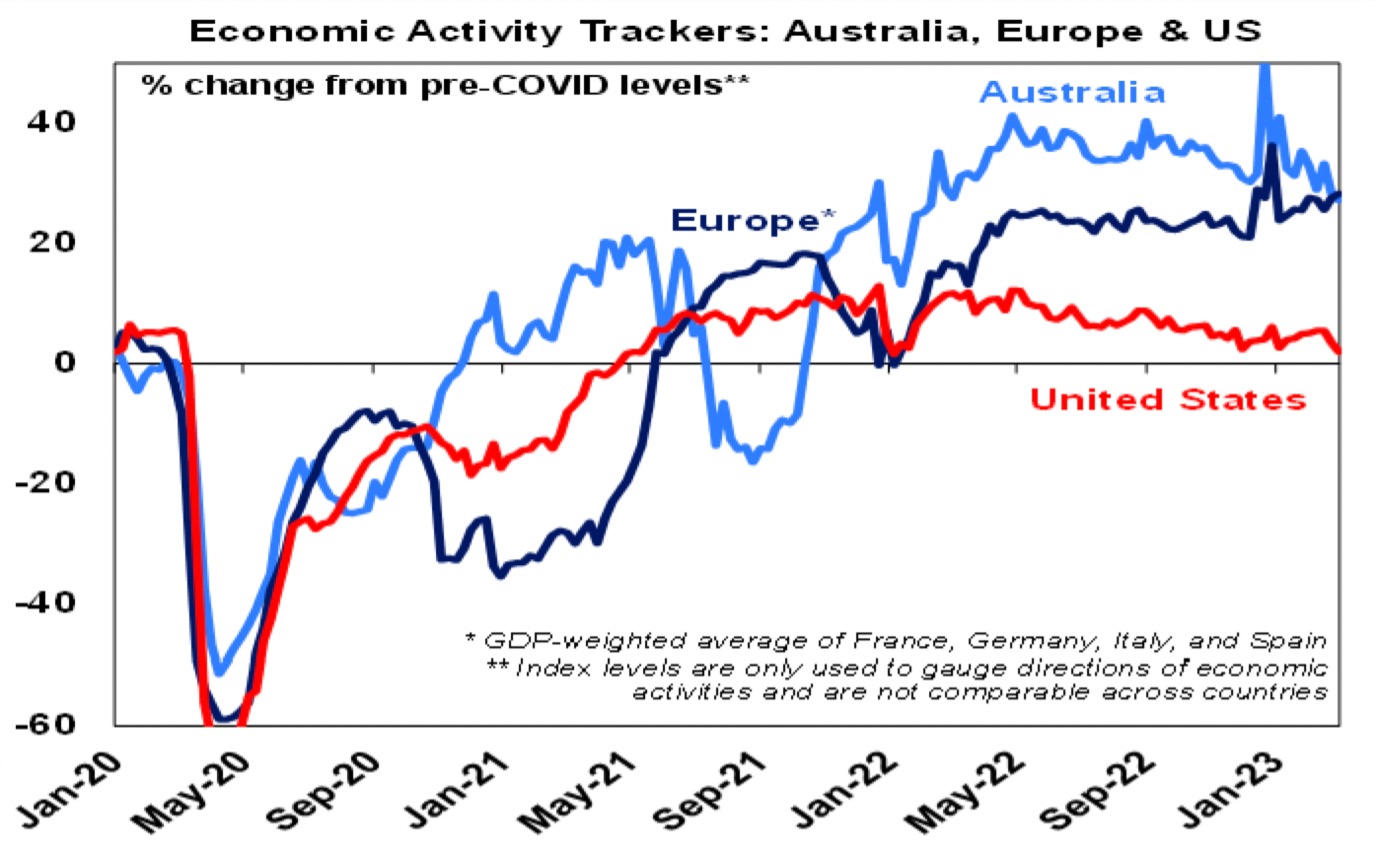
- US job openings data fell back but only slightly and remains 1.9 times the level of the unemployed, which suggests the jobs market remains tight. The labour market will be crucial to what the Fed does on rates.
Bad bank news could frighten the Fed
Fortunately, there’s a belief that big US banks aren’t vulnerable to the Fed’s rate rising torture so we could, in time, see this bank sell-off as a buying opportunity. However, the Fed must be careful about too many more rate rises. I bet Jerome Powell will be hoping next week’s CPI gives him a chance to ease up on the tough talk. We’re seeing signs that the US economy is slowing and the prospect of small bank failures will spook consumers, who are responsible for a lot of GDP growth. Ceicdata.com reports that “United States Private Consumption accounted for 68.5 % of its Nominal GDP in December 2022.” That’s huge!
The week in review:
(This table bleow was downloaded before the close of trading, however, after the closing bell, the data feed picked up a gremlin! The changes week on week are not precise but the percentage changes are roughly right. We will seek and destroy that gremlin for next Saturday. Apologies, as we like to be accurate.)
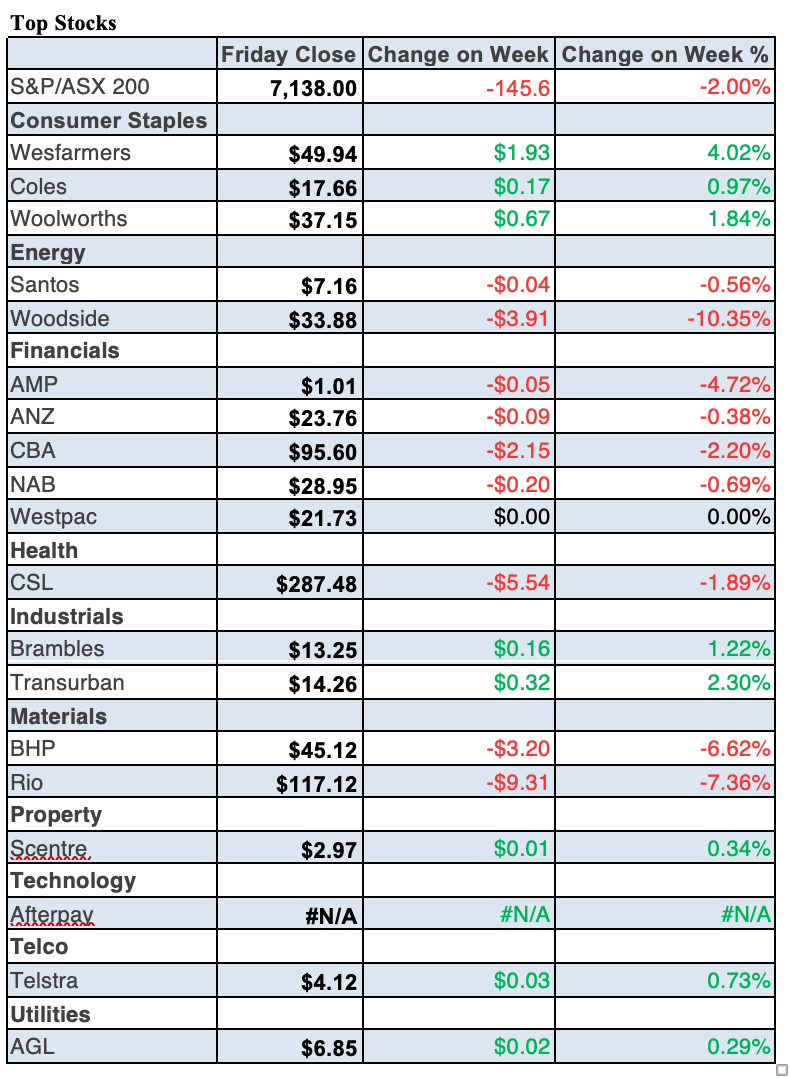
Our videos & stories of the week:
- Time for QBE and IDP Education? And what about investing with Kerry Stokes and Seven Group? –
- Albo’s doing the mess around with franking credits. What’s his next move?
- Are banks happy to help the RBA kill customers?
- Are industry super funds wasting billions of your retirement nest egg?
- When will the RBA pause these incessant rate rises?
The Week Ahead:
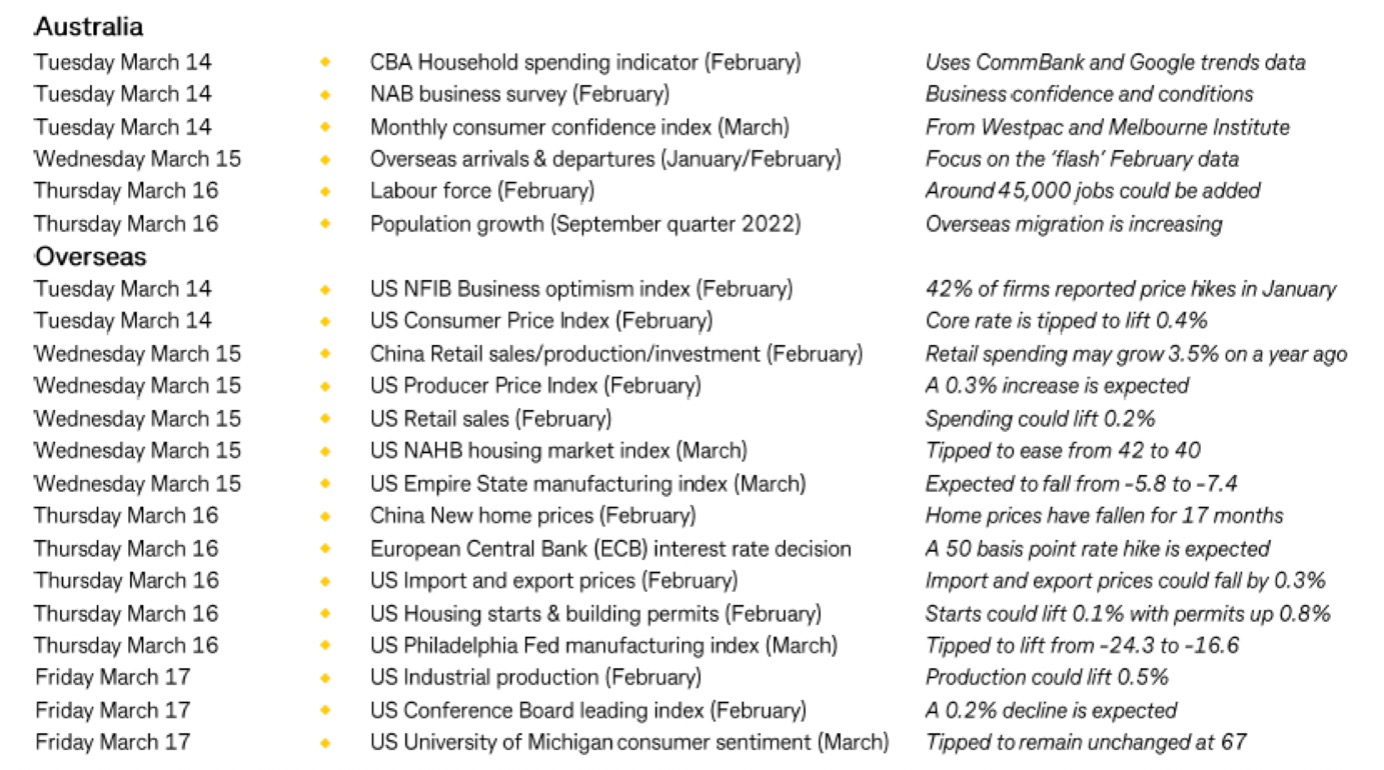
Stocks shorted:
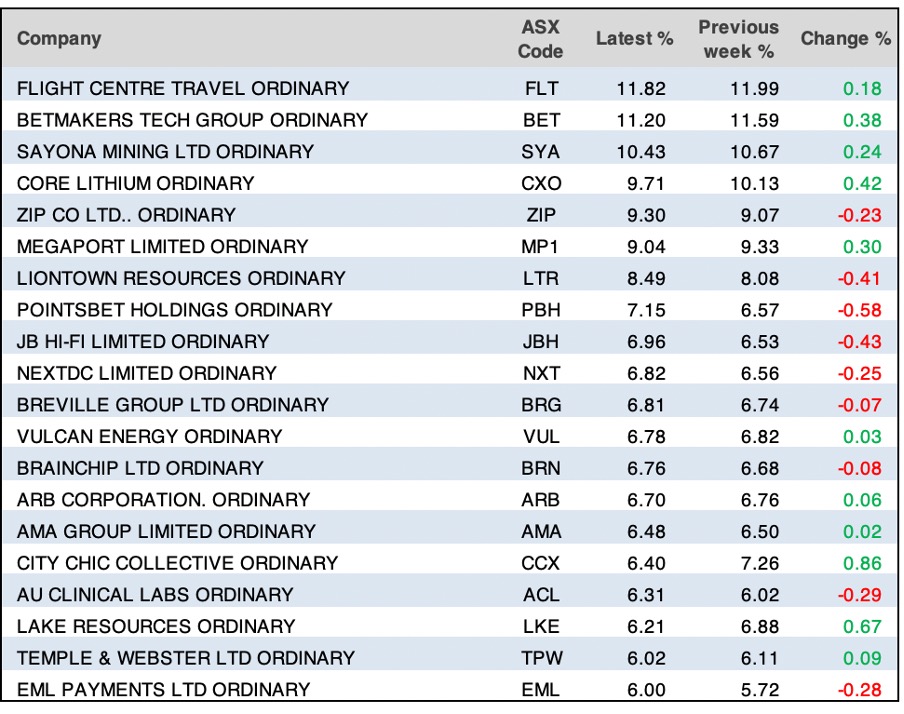
Quote:
“Fed policy looks very misguided right now.”
Professor emeritus of Finance, Jeremy Siegel, at the Uni of Pennsylvania’s Wharton School of Business.
Chart of the Week
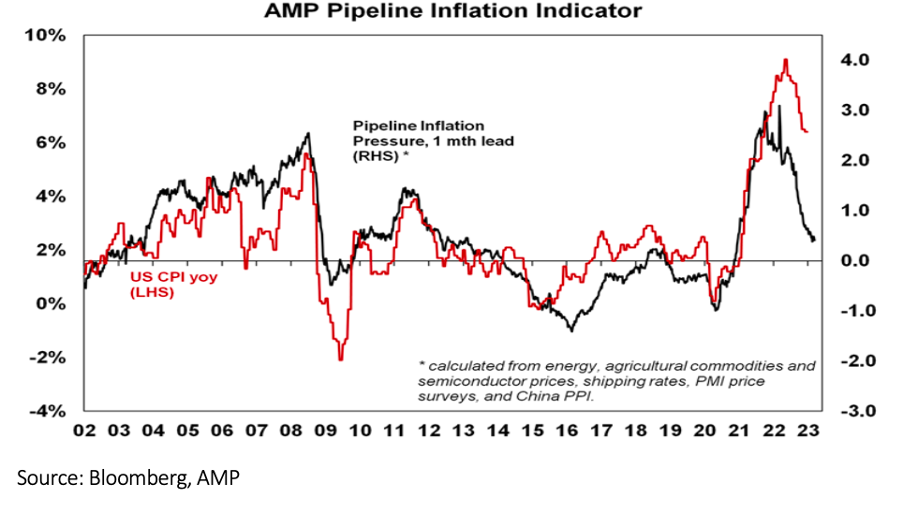
Stock markets have slipped lately because there are fears that US inflation won’t fall fast enough but Shane Oliver’s inflation-tracking chart tells us it will soon show up as a decent slide and that will be a big plus for stocks. Once that red line falls more, stocks will take-off!

